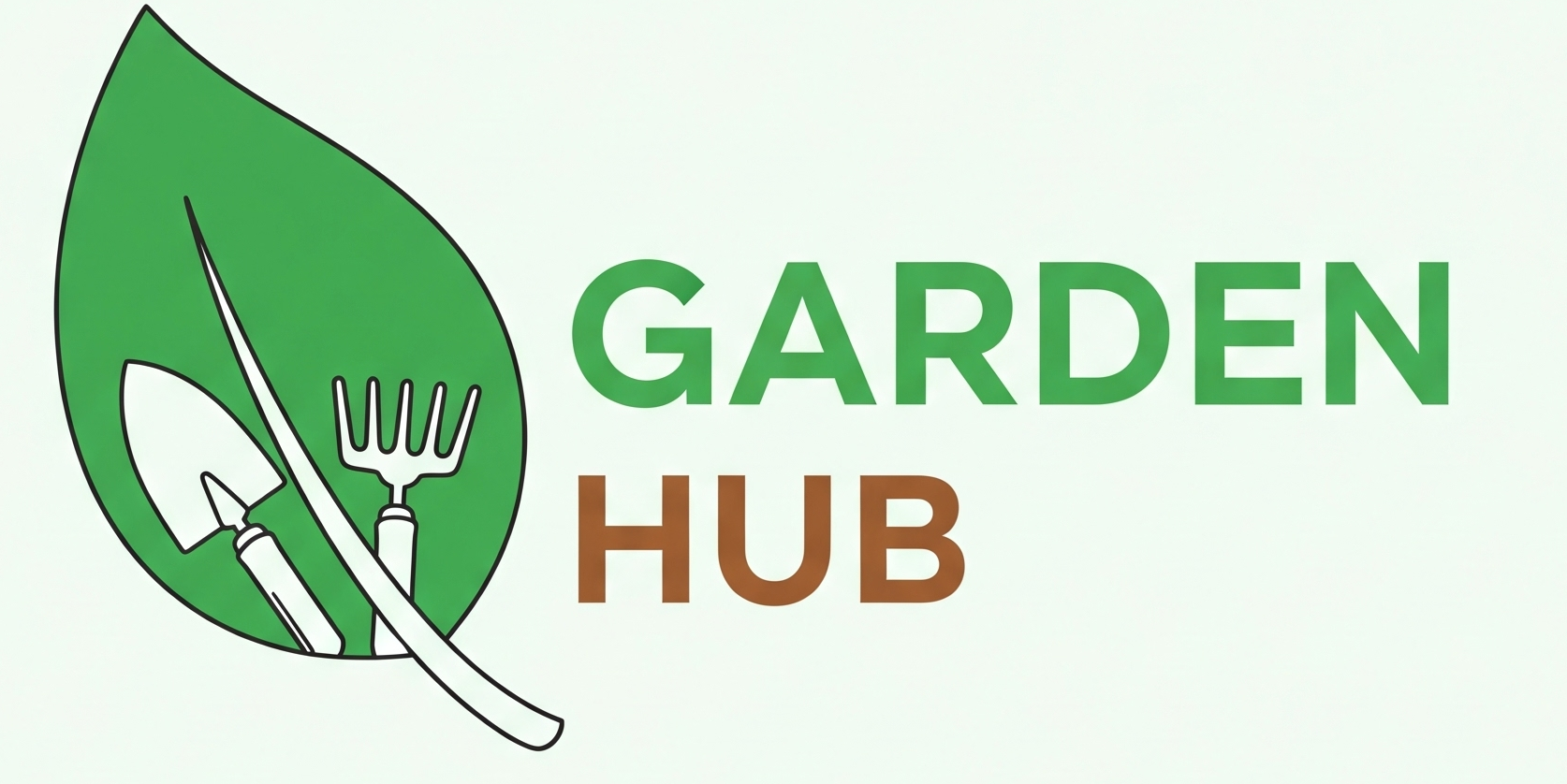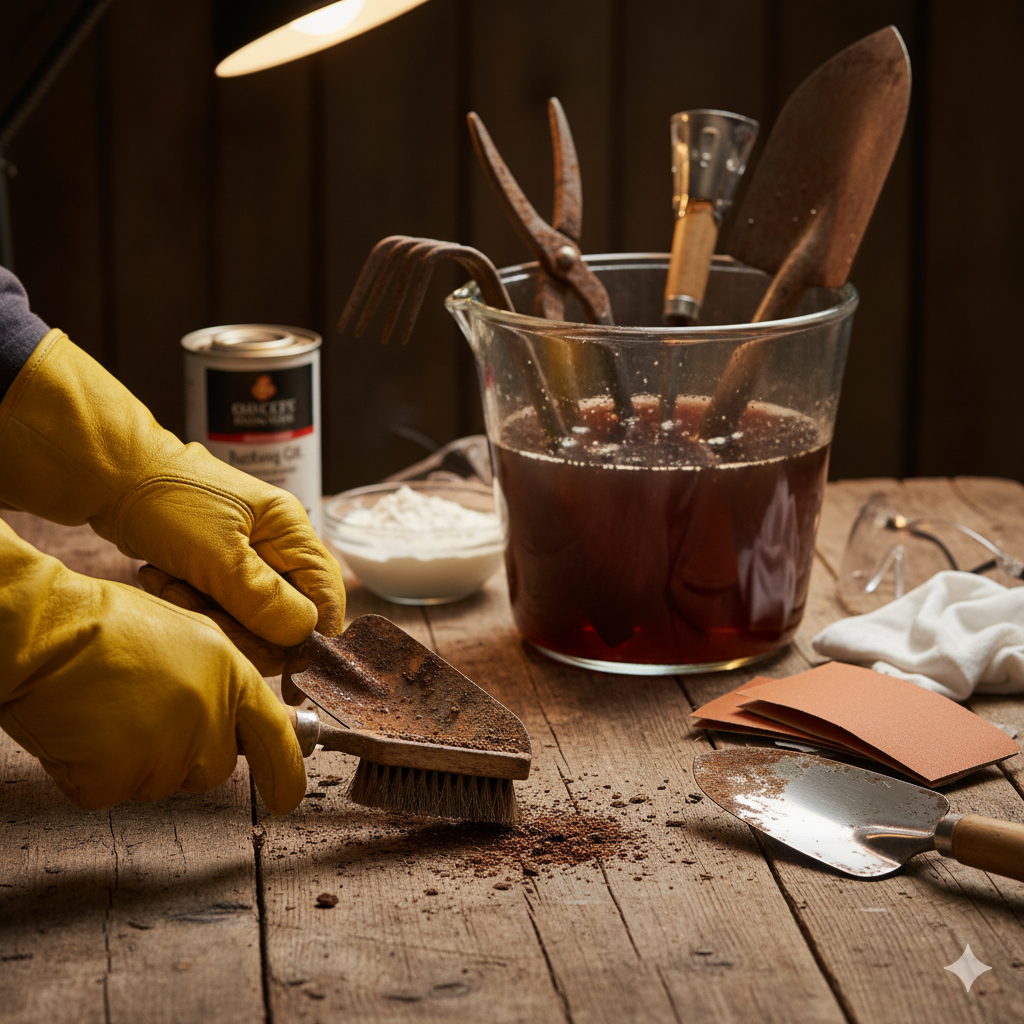Your garden tools may suffer greatly from rust. In addition to making them appear worn out and outdated, it may also impair their functionality, making your gardening chores more difficult. Fortunately, it’s not as hard as it seems to remove rust from your gardening tools. You can make your tools function like new again and return them to their previous splendor with a few easy tools and methods.
We’ll walk you through the process of removing rust from your gardening tools in this post. We can help you if you’re struggling with a rusty shovel, rake, or pruning shears. After reading this article, you’ll know exactly how to keep your garden tools clean and in good working order.
Why Does Rust Form on Garden Tools?
Let’s first examine the causes of rust formation before going on to the removal procedures. A chemical process involving metal, water, and oxygen produces rust. The metal in your garden equipment begins to oxidize when they come into contact with moisture, including rain or moist soil. The metal corrodes as a result of this oxidation over time, turning into rust, a reddish-brown material.
In addition to weakening the metal, rust makes using your tools more difficult. Your gardening quality may suffer if you use rusty blades because they can become less sharp and more challenging to use. For instance, rusty shears may cause jagged wounds in your plants that can cause infections, and a rusty spade may be more difficult to dig with.
After learning the causes of rust, let’s examine the best ways to get rid of it from your tools.
How to Remove Rust from Garden Tools – The Simple Steps
Removing rust from your garden tools is a straightforward process, but it requires patience and the right tools. Here are the steps you need to follow to restore your rusty garden tools:
1. Clean the Tools First
Before you can begin removing the rust, it’s important to clean your garden tools to remove any dirt, sap, or other debris. This ensures that the rust removal process goes smoothly and helps you see exactly where the rust is.
- How to clean: Use a wire brush to scrub off any dirt, soil, or old plant material stuck to the tool. If the tool is very dirty, wash it with warm, soapy water, then dry it thoroughly before moving on to the rust removal steps.
2. Use a Rust Remover
There are several rust removers available in the market that can help you get rid of rust quickly and easily. Some of these are chemical solutions that break down the rust, while others may be in gel or paste form. To use a commercial rust remover:
- Apply the rust remover directly to the rusted areas of the tool.
- Follow the instructions on the product label. Usually, this means letting the remover sit for a few minutes or up to an hour.
- Wipe off the rust with a clean cloth or scrub the rust away with a wire brush or steel wool.
Rust removers are effective, but they may contain harsh chemicals, so be sure to use them in a well-ventilated area and wear gloves for protection.
3. Use Household Items to Remove Rust
If you prefer a natural, more eco-friendly approach, you can use common household items to remove rust. Some of the best rust removers you probably already have at home include:
- White Vinegar: Vinegar is an acidic liquid that can break down rust. To use vinegar:
- Soak a cloth in vinegar and wrap it around the rusted parts of your tool.
- Let it sit for a few hours or overnight.
- Use a wire brush or steel wool to scrub away the rust.
- Baking Soda: Baking soda is another great option for removing rust. It works by creating an abrasive paste that helps scrape off rust. To use:
- Mix baking soda with water to form a paste.
- Apply the paste directly to the rusty areas.
- Scrub with a brush or steel wool to remove the rust.
- Lemon Juice and Baking Soda: For stubborn rust, a combination of lemon juice and baking soda can work wonders. The citric acid in the lemon juice helps break down the rust, while the baking soda adds abrasiveness. To use:
- Apply lemon juice to the rusted area and sprinkle baking soda on top.
- Let it sit for a few hours.
- Scrub the rust off with a wire brush or steel wool.
4. Use a Steel Brush or Sandpaper
Once you’ve applied your rust remover or homemade solution, you will need a steel brush, sandpaper, or a wire brush to scrub away the rust. This step is crucial to removing the remaining rust and smoothing the surface of the tool.
- How to use: Scrub the rusted areas in a circular motion. Make sure to apply firm pressure to ensure the rust comes off. Don’t forget to scrub the edges of the blade or tool as well.
How to Prevent Rust from Coming Back
After you’ve successfully removed the rust, the last thing you want is for it to come back. Fortunately, there are several things you can do to keep your garden tools rust-free in the future. Here are some tips:
1. Keep Tools Clean and Dry
One of the best ways to prevent rust is to keep your tools clean and dry. After each use, clean your garden tools to remove dirt, sap, and moisture. If you’ve been working with wet soil or cutting damp plants, make sure to dry your tools thoroughly before storing them. Water is one of the main causes of rust, so keeping your tools dry is key.
2. Apply Oil or Lubricant
After cleaning and drying your tools, apply a thin layer of oil to the metal parts to protect them from moisture. You can use vegetable oil, motor oil, or a special tool oil. Wipe the oil onto the tool with a clean rag, making sure to cover all the metal surfaces. This will create a protective barrier that helps prevent rust from forming.
3. Store Tools Properly
Storing your tools in a dry, cool place is another effective way to prevent rust. If possible, keep them off the ground to avoid moisture from seeping in. Hanging your tools on a wall or storing them in a shed can keep them dry and protected.
4. Use Rust-Resistant Coatings
Some garden tools come with rust-resistant coatings or finishes. If your tools are old and don’t have this protection, you can apply a rust-resistant spray or coating to the metal parts. This will help shield the tool from moisture and reduce the chances of rust developing in the future.
Other Tips and Tricks for Maintaining Your Garden Tools
Maintaining your garden tools is more than just removing rust. Regular care will keep them working at their best and extend their lifespan. Here are a few extra tips to help you care for your tools:
1. Sharpen the Blades Regularly
In addition to removing rust, make sure to regularly sharpen the blades of your garden tools. A sharp blade will work better and is less likely to get damaged. You can use a sharpening stone or a file to sharpen your tools. This is especially important for tools like shovels, shears, and hoes.
2. Check for Loose Parts
Before each use, check your tools for any loose screws, nuts, or bolts. Tighten them up to ensure the tool functions properly. This will prevent any accidents and extend the life of the tool.
3. Handle with Care
When using your garden tools, be sure to handle them with care. Avoid using them for tasks they were not designed for, as this can cause unnecessary wear and tear. For example, don’t use your pruning shears to cut branches that are too thick for them. Always use the right tool for the job.
Rust-Free Tools, Happy Gardening
Rust is a common problem for garden tools, but it’s something you can easily fix with the right methods. By following the steps outlined in this article, you can remove rust from your tools and keep them in excellent condition for years to come. Regular cleaning, oiling, and proper storage will help you prevent rust from forming again.
Rusty tools can slow you down and make your gardening tasks harder, but with a little maintenance, you can ensure your tools work efficiently. Whether you choose to use store-bought rust removers or DIY solutions like vinegar and baking soda, the important thing is to stay on top of tool maintenance. Your garden will thank you for it!
Frequently Asked Questions (FAQs)
1. How can I tell if my garden tools are rusted?
Rust appears as a reddish-brown coating on the metal surface. If your tools feel rough or sticky and the metal has a reddish hue, they are likely rusted.
2. Can I remove rust from my tools without using harsh chemicals?
Yes! You can use natural solutions like vinegar, lemon juice, and baking soda to remove rust from your garden tools without harsh chemicals.
3. How can I prevent rust from forming on my garden tools?
Keep your tools clean and dry after each use. Apply a thin layer of oil to the metal parts to protect them from moisture and store them in a dry place.
4. How often should I remove rust from my garden tools?
It’s a good idea to check your tools for rust regularly, especially at the beginning of the gardening season. If you notice rust forming, remove it right away to prevent further damage.
5. Is it safe to use my tools while they are rusty?
While it is safe to use rusty tools, they may not work as efficiently. Rust can damage the metal and make the tool harder to control. It’s best to remove the rust before using your tools.

